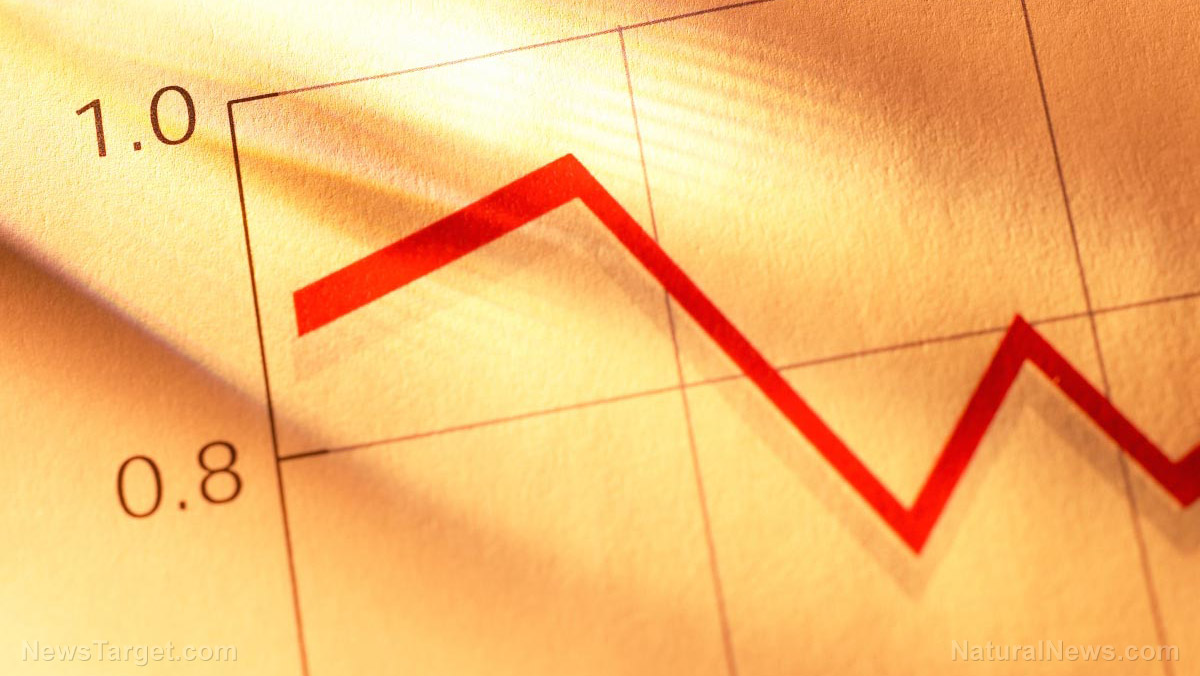Supply chain crisis disrupts operations of food banks
11/12/2021 / By Matthew Davis

Food banks are being affected greatly by the ongoing supply chain crisis as they see an increasing number of clients while getting smaller amount of foods.
“When there’s a shortage in supply chain, it makes it much more difficult for us to be able to provide our clients with food,” said Linda Hansen, the food bank director at Wellspring Interfaith Social Services in Fort Wayne, Indiana.
Adding to the problem is the increasing number of clients. “While the amount of food the bank has to give out has gone down, it needs to service a lot of new clients,” Hansen said. She said they typically serve about 1,600 clients per month.
Hansen said Wellspring Interfaith Social Services has seen a decline in the amount donations from both retailers and the public, noting that their shelves would normally be a lot fuller right now. (Related: Food banks struggle amid supply chain crisis in the US.)
“We usually get several people donating a week and it’s not necessarily a huge amount of food, but it’s just a little bit extra that helps us serve the clients, and those have whittled down to sometimes we get no donations during the week,” Hansen said.
Darlene Walker, warehouse supervisor for Community Harvest Food Bank, said stocking the shelves has become more challenging despite getting a steady amount of donations.
“A lot of places that we order food from are saying that it’s three to four months out before we can even get it,” said Walker. “We then have to depend on volunteers and donations to come in to help fill in that gap. If we will continue the process that we’re in, it’s going to be a detriment to to everyone, not having enough truck drivers to get the product.”
Since Wellspring Interfaith Social Services shops for some of its food at Community Harvest, it is starting to see the trickle down effect of this issue. “We’re seeing a decline in the availability of product,” said Hansen. “The cost is so high at the grocery store that they’re not able to keep things on the shelf because people buy it while they [the stores] have it.”
Food bank representatives said that while waiting for the supply chain to get back to normal, the biggest way the public can help is to donate food. This is especially important during the holidays.
“Not everyone can go out and just get a turkey and all the trimmings and we want to ensure that we can provide that for our community,” said Walker. “Everyone deserves to have a respectable holiday. I couldn’t imagine not being able to get up and have children and not be able to offer that dinner for them.”
Holiday menu staples expected to be hit hardest by supply chain issues
Meanwhile, holiday menu staples are expected to be hit the hardest by supply chain issues and price hikes, plus staffing shortages, scarcity and higher cost of production.
Due to issues on packaging, the side dishes will be affected. Oklahoma State University food economist Rodney Holcomb said there is no problem with ingredients, but materials for packaging like aluminum cans, glass jars and bottles are tied up in shipping bottlenecks on their way from China.
“Those could be stuck on a ship somewhere off the West Coast and just not making it into port,” Holcomb said, noting that there may be plenty of cranberries to make cranberry sauce but there’s no easy way to package it. Others are having trouble getting labels for their products. As food makers get creative on how to cope with packaging changes and shortages, those costs can be passed on to consumers. (Related: Shipping rates continue to rise as holiday season nears.)
On top of the packaging problems, the California drought is also impacting the production of grapes, nuts, different fruits and vegetables. “Hurricane Ida shut down sugar refineries in the southeast,” said Holcomb. “Any one of those might have an impact. You throw them all together, and they become quite the challenge.”
Raw vegetables might be more expensive because the cost of fertilizer imported from China has skyrocketed. The increased cost of fertilizer means it’s more expensive to grow corn, which means it’s more expensive to raise chickens, turkey and other livestock. “It’s one big expensive circle,” said Holcomb.
Desserts aren’t spared from the problem. Holcomb advised consumers to buy foods which are shelf stable like a can of pumpkin or a pre-made frozen pie crust.
“Even some of the sturdier vegetables, like sweet potatoes, will last long enough if you store them properly. Start planning ahead and it gives you time to look around. If one store doesn’t have that one product you want, it gives you time to look around for the thing you want,” Holcomb said.
Derrell Pierce, an Oklahoma State University agricultural economics professor specializing in livestock, said the prices of meat – which is the main course for many families – have risen especially high compared to the five percent price increase in all food from a year ago.
Be flexible in dealing with uncertainty
The protein markets have been through a lot in the last year, with demand spiking during Wuhan coronavirus (COVID-19) lockdowns and meat processing plants being hit hard by virus outbreaks. Pierce doesn’t expect we’ll be seeing cleaned out, empty meat cases at grocery stores this year, but there are still some quirks you may notice. (Related: Supply chain execs predict chaotic holiday peak as crisis continue.)
For example, you might have trouble finding a small turkey. That’s because turkeys grow pretty quickly, so if there are any slowdown at a processing plant (because of a COVID-19 outbreak or a broken piece of equipment that needs a part shipped from overseas), then those turkeys keep getting bigger and bigger.
“Whenever a turkey reaches that 10 to 13 lb. window, if they can’t get them slaughtered on time … now you’ve got an 18 to 20 lb. turkey,” said Pierce.
His tip for dealing with the uncertainty this year is to stay flexible. “You may not get exactly the product you’ve always gotten,” said Pierce. “There will be a turkey of some size. There will be hams. They may not be the boneless, spiral cut you normally get, but there will be some other form of ham.”
“If there was ever a time where you have said, ‘maybe I should mix things up and drop one of the traditional items and try something new,’ this would be the year to consider it,” said Holcomb.
Follow FoodCollapse.com for more news related to supply chain issues and surge in food prices.
Sources include:
Tagged Under: Bubble, chaos, food banks, food collapse, food production, food supply, grocery, harvest, holiday, inflation, pandemic, panic, price hikes, shipping, supply chain, supply chain crisis
RECENT NEWS & ARTICLES
COPYRIGHT © 2018 PANIC.NEWS
All content posted on this site is protected under Free Speech. Panic.news is not responsible for content written by contributing authors. The information on this site is provided for educational and entertainment purposes only. It is not intended as a substitute for professional advice of any kind. Panic.news assumes no responsibility for the use or misuse of this material. All trademarks, registered trademarks and service marks mentioned on this site are the property of their respective owners.





















